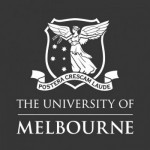
Freedom As _____
13 Royal Parade, Parkville,
Melbourne, VIC
FREE
‘Freedom’ is to choose without the choice to not choose.
Fundamentally, freedom is the condition of being free. It may be seen as a duality between oppression and the oppressed. Here, freedom is observable as curtailment, limit, restriction; a matter of presence and absence.
Freedom may also be possessed through acts of self-agency. At times there are triumphant moments when it appears the oppressor has become the suppressed. Uncovered, the mouth speaks, revealing that it was there all along. Now, freedom begins to appear obtainable through assertion, interference, deviation.
Yet these variances of freedom become confused in the face of one’s own freedom. How do we separate an act of freedom from an act of self-interest? From Wentworth to know-your-worth: desires are indulged through our freedoms, but how enjoyable, or emancipated, is a freedom that is always already dictated?
Musically, freedom may be observed in multiple ways; through the relationship between conductor and performer, the act of free improvisation as self-expression, and the agency of performance transformed into musical forms of self-interest.
This program takes as its point of departure the music and ideas of autodidactic Australian composer and polymath Percy Grainger, specifically his sense of ‘freedom’ expressed in the works and experiments that he called free music. In a series of specially commissioned performances utilising Grainger’s recently rebuilt free music ‘machines’ a group of artists and musicians offer their own multifaceted readings of Grainger’s ‘freedom’, inviting the audience to consider what the term might signify today.
Eric Demetriou & Herbert Jercher
HJ: ‘The real thing that has interested me during my time as an arts practitioner is to feel the essence of each discipline during the time of engagement. My kinesthetic sense, informed by my proprioceptive awareness, enables me the freedom to play during a performance. Natural and artificial design constraints influence my choice of adaptive strategies whilst interacting with semiotic elements during a performance.
A point of readiness exists when Eric and I engage in sound art. This in situ performance artwork is the culmination of progressive authorship, collated by institutions and individuals who have generously passed on their acquisitions, now evident in our current expressions of interest’.
Eric Demetriou completed a Masters of Fine Art at the Victorian College of the Arts in 2013 and is a current artist in residence at Gertrude Contemporary. Recent solo exhibitions include: Sanaterrarium: performance art festival for frogs and crickets, Gertrude Glasshouse Gallery, (2017); An Afternoon with Herb Jercher, Lindberg Galleries (2016); Four minutes and thirty-three seconds in cat years, TCB Art inc (2015), and Flee Flu, West Space, (2014). Demetriou is an active member of Melbourne groups TBP, Germlock, and frequent collaborator with sound artist and whip cracker, Herbert Jercher.
Herbert Jercher is a sound artist and pioneer in the design of sound sculptures, installations and acoustic systems. His works embrace a wide range of contexts and needs, whether for school or community playground, foyers and atriums of shopping centres or hotels, the home garden, a city, street performance or museum courtyard. His works are environmentally friendly as well as fun to play and listen to.
Eric Demetriou and Herbert Jercher, collaborate in a sonic exploration of the Australian art of whip cracking; performing improvised music with various Australian stock whips, beat frequencies and drum implosions.
Antonia Sellbach with Julie Burleigh & Alison Bolger
AS: ‘The origin of these three scores began with the letters of Percy Grainger. I was interested in taking something literal, like a typed letter and re-coding it into a series of coloured dots and dashes. This process of redaction freed the words from their literal reading, and in turn linked them to abstraction – something very much entangled within language and communication. The act of redaction has historically had more associations with censorship than freedom and yet the interpretation of a letter, its punctuation and words into a new language of dots and dashes and then again into music, contains a multitude of new freedoms that also align with Grainger’s concept of free music.’
Antonia Sellbach is a Melbourne-based artist. Her work explores abstraction in relation to thought, sensation and serial decision-making. Often modular in nature, Sellbach’s paintings and sculptures create partitions and parts, sets and versions, work made to be configured and reconfigured. Sellbach has exhibited widely and her work is held in private collections, both within Australia and internationally. Her work has appeared in magazines and journals including Primer, Est and Vogue Italia. Sellbach is currently completing a PhD exploring the connections between Wittgenstein’s concept of Language Games and Contemporary Abstraction.
Antonia Sellbach is also a musician with Melbourne bands Love of Diagrams and Beaches. Sellbach is also a founding member of LISTEN, a feminist collective that seeks to gain further visibility for women within the Australian Music Underground. She is currently a lecturer at Melbourne Polytechnic in Creative Arts.
Julie Burleigh is an ex-People Person and ex-The French. Occasional recorder session muso with bands (Beaches, Free Time, The Ancients). Burleigh has played solo on and off for many years, utilising op-shop keyboard, guitar pedals, loop pedals and recorder.
Alison Bolger is a Melbourne-based musician. She is a founding member of Beaches, Panel of Judges, Clag and was a longstanding member of Sleepy Township. Alison has played in improvised sound ensembles such as Hi God People, Exhaustion and Actual Holes. She has recently performed solo shows and produced recordings under the moniker of Heavy Epic.
Is There A Hotline?
Avid ‘flow’ practitioners and DIY enthusiasts Jen Tait and Jen Callaway call out to the cosmos using an assemblage of percussive objects and electronica, evoking transportive atmosphere, psychic storms and quiet retreats.
Is There A Hotline? will incorporate Grainger’s concepts of musical scale freedom (microtonal and free flowing pitch intervals), automation (via electronic looping and self-composing ornamentation), as well as distinctively embellished practical clothing design. A transcendent stargazing waltz and audience stimulation via Grainger-styled devices may also feature.
Artists


